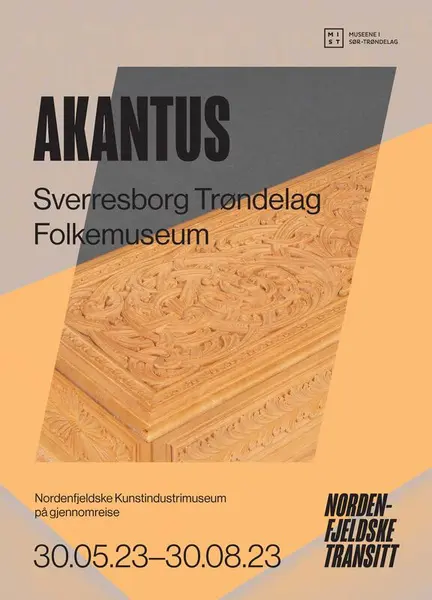Few people probably associate Nordenfjeldske Kunstindustrimuseum with Norwegian folk art, particularly bondemøbler – a type of traditional wooden furniture made in rural communities – but when the museum was established in 1893, folk art was important for the museum to collect. There were at least two reasons for this.
First of all, it was seen as crucial to hinder Norwegian folk art from being sold abroad. Secondly, folk art was essential to how modern Norwegian craft was developing at the time. During the latter half of the 1800s, the craft of woodcarving became increasingly professionalised. Much focus was placed on the material qualities of wood and the development of acanthus foliage in ornamentation. This was not least because the acanthus had been an important motif in rosemaling (‘rose painting’, a vegetal style of decorative painting) and in the decoration on bondemøbler. As the level of skill in woodcarving increased, so also did the focus on the individuals who specialized in the craft, with woodcarvers being identifiable on account of each one’s unique expression. Ole Olsen Moene (1839–1908) was seen as a pioneer in this respect. The museums for decorative art and design in Trondheim and Kristiania (now Oslo) considered Moene’s production as an artistic practice, and they were eager to collect his works.
In the woodcarvers’ renewal of the acanthus motif, we find certain parallels to the Arts and Crafts Movement in England in the 1800s, where there was talk of a ‘Gothic Revival’. The architect A. W. Pugin provided starting assumptions when he drew inspiration from Gothic art and architecture. In Norway there was no clear theoretical movement, but the idea of renewal based on historical traditions and expressions was clearly present in woodcarving.
While much of today’s craft is less concerned with functionality than with themes and references, the connections to materiality and crafting skill endure. Using Moene’s woodcarving as a point of departure, we want to give insight into a field of art that undergoes constant change.

